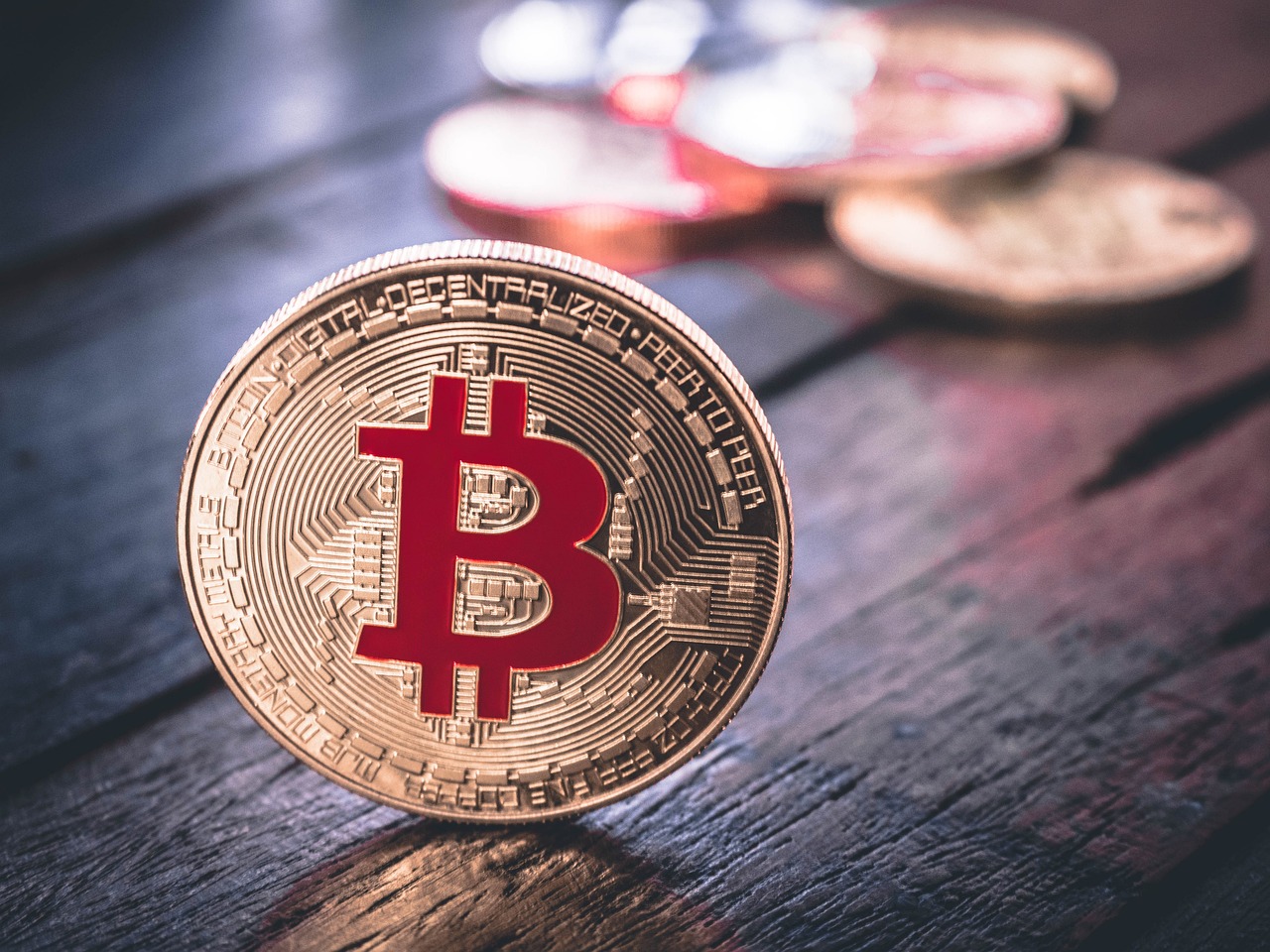Saber - A Deep Dive into Stablecoin Swaps
In the ever-evolving landscape of cryptocurrency, stablecoins have emerged as a beacon of stability amidst the volatility that characterizes the market. But what happens when you want to swap one stablecoin for another? This article explores the intricate mechanics of stablecoin swaps, the myriad benefits they offer, and their pivotal role in the decentralized finance (DeFi) ecosystem. By delving into these aspects, we aim to provide insights into how stablecoin swaps impact liquidity and trading strategies, ultimately enhancing your understanding of this dynamic financial tool.
Stablecoins are cryptocurrencies that are designed to maintain a stable value, often pegged to traditional currencies like the US dollar or the euro. This stability makes them an attractive option for traders and investors who want to avoid the wild price swings typical of other cryptocurrencies. There are several types of stablecoins, including fiat-collateralized, crypto-collateralized, and algorithmic stablecoins. Each type has its own mechanism for maintaining stability, which is crucial for their functionality in the crypto market.
For instance, fiat-collateralized stablecoins are backed by reserves of fiat currency, ensuring that for every stablecoin issued, there is an equivalent amount held in reserve. On the other hand, crypto-collateralized stablecoins use other cryptocurrencies as collateral, which can introduce additional volatility but also offers greater decentralization. Algorithmic stablecoins, however, rely on algorithms to control supply and demand, adjusting the number of coins in circulation to maintain their peg. Understanding these mechanisms is essential for grasping the importance of stablecoins in the broader cryptocurrency market.
Stablecoin swaps involve exchanging one stablecoin for another, and this process is facilitated by various mechanisms within the DeFi ecosystem. The primary players in this arena are liquidity pools and automated market makers (AMMs), which work together to ensure that these transactions can occur smoothly and efficiently. When you initiate a swap, you are essentially tapping into a pool of liquidity that allows for the immediate exchange of stablecoins without the need for a traditional order book.
Liquidity pools are a cornerstone of stablecoin swaps, providing the necessary liquidity for trades to occur. These pools consist of funds that are locked in a smart contract, allowing users to trade against this pool rather than relying on buyers and sellers to match orders. The significance of liquidity pools in DeFi platforms cannot be overstated; they enable seamless transactions, reduce slippage, and enhance overall trading efficiency.
Creating a liquidity pool might sound daunting, but it's a relatively straightforward process. Users looking to establish their own pools need to deposit assets into a smart contract. Here are the essential steps to follow:
- Select the stablecoins you want to include in your pool.
- Determine the ratio of assets to deposit.
- Deposit the assets into the smart contract.
- Set the parameters for trading fees and rewards for liquidity providers.
By following these steps, you can contribute to the liquidity of the platform while also earning rewards for your participation.
While liquidity pools offer numerous benefits, they are not without risks. One of the most significant risks is impermanent loss, which occurs when the price of the assets in the pool diverges from their original value. This can lead to a situation where liquidity providers end up with less value than if they had simply held onto their assets. However, there are strategies to mitigate these risks, such as diversifying your assets across multiple pools or utilizing stablecoin swaps to rebalance your portfolio.
AMMs play a critical role in enabling stablecoin swaps without relying on traditional order books. They use algorithms to set prices based on supply and demand, allowing for more efficient trading. The advantages of AMMs over centralized exchanges include reduced fees, increased accessibility, and the ability to trade 24/7 without the need for intermediaries. This decentralized approach not only democratizes access to trading but also enhances liquidity across the ecosystem.
Stablecoin swaps come with a host of advantages that can significantly benefit traders and investors alike. One of the standout benefits is the reduction in volatility, as stablecoins are designed to maintain a consistent value. This stability allows traders to execute transactions without the fear of significant price fluctuations that can wipe out profits in an instant.
Another compelling benefit of stablecoin swaps is their potential to lower transaction costs. Traditional trading methods often involve high fees, especially on centralized exchanges. In contrast, swapping stablecoins can be much more economical, allowing users to maximize their returns. By leveraging liquidity pools and AMMs, traders can enjoy lower fees and faster transactions, making stablecoin swaps a more attractive option.
Stablecoin swaps also facilitate portfolio diversification, enabling users to easily adjust their holdings based on market conditions. By swapping between different stablecoins, traders can manage risk more effectively and optimize their investment strategies. This flexibility is particularly valuable in the fast-paced world of cryptocurrency, where market dynamics can shift rapidly.
What are stablecoins?
Stablecoins are cryptocurrencies designed to maintain a stable value, often pegged to traditional currencies.
How do stablecoin swaps work?
Stablecoin swaps involve exchanging one stablecoin for another through liquidity pools and automated market makers.
What are the risks associated with liquidity pools?
The primary risk is impermanent loss, which occurs when the price of the assets in the pool diverges from their original value.
How can I create a liquidity pool?
You can create a liquidity pool by depositing assets into a smart contract and setting trading parameters.
What are the benefits of stablecoin swaps?
Stablecoin swaps reduce volatility, lower transaction costs, and enhance portfolio diversification.

Understanding Stablecoins
Stablecoins are a unique breed of cryptocurrencies designed to provide the best of both worlds: the stability of traditional fiat currencies and the decentralized nature of digital assets. Imagine a bridge that connects the volatility of cryptocurrencies with the stability of the dollar or euro. This is precisely what stablecoins aim to achieve. They are often pegged to a stable asset, such as a national currency, which helps them maintain a consistent value. This reliability makes them an attractive option for traders and investors looking to navigate the often tumultuous waters of the crypto market.
There are several types of stablecoins, each with its own mechanism for maintaining price stability. The primary categories include:
- Fiat-collateralized stablecoins: These stablecoins are backed by a reserve of fiat currency, such as the US dollar. For every stablecoin issued, there is a corresponding dollar held in reserve, ensuring that users can redeem their tokens at any time.
- Crypto-collateralized stablecoins: Unlike their fiat-backed counterparts, these stablecoins are backed by other cryptocurrencies. They typically require over-collateralization to account for the volatility of the underlying assets.
- Algorithmic stablecoins: These do not rely on collateral but instead use algorithms to control the supply of the stablecoin, adjusting it based on demand to maintain a stable price.
The importance of stablecoins in the cryptocurrency market cannot be overstated. They serve as a safe haven during periods of high volatility, allowing traders to quickly convert their assets into a stable form without having to exit the crypto ecosystem entirely. This capability enhances liquidity across various platforms, making it easier for users to execute trades and manage their portfolios effectively. Furthermore, stablecoins facilitate seamless cross-border transactions, reducing the friction typically associated with international money transfers.
In summary, stablecoins play a crucial role in the evolving landscape of digital finance. They offer a reliable means of preserving value, making them indispensable tools for traders, investors, and anyone looking to engage with the cryptocurrency market without the constant worry of price fluctuations. As the world of DeFi continues to grow, understanding stablecoins and their mechanics will be essential for anyone looking to navigate this exciting space.

The Mechanics of Stablecoin Swaps
When we talk about stablecoin swaps, we’re diving into a fascinating world where digital currencies meet the stability of traditional finance. At its core, a stablecoin swap is the process of exchanging one stablecoin for another. This might sound simple, but the mechanics behind it are anything but. Imagine you’re at a bustling market, trading apples for oranges. In the crypto world, stablecoins serve as those apples and oranges, and the market is powered by innovative technologies that make these swaps seamless and efficient.
To facilitate these transactions, we rely heavily on liquidity pools and automated market makers (AMMs). Liquidity pools are essentially reserves of funds locked in smart contracts that allow users to trade without needing a traditional buyer or seller on the other side. Think of it as a community pot where everyone contributes to ensure that there’s always something to trade. This is crucial because, without sufficient liquidity, the market can become stagnant, leading to higher prices and less favorable trading conditions.
Now, how does this all work? When you decide to swap one stablecoin for another, you interact with a liquidity pool. Let’s say you want to exchange USDC for DAI. When you initiate this swap, the AMM algorithm calculates the exchange rate based on the current liquidity in the pool. It’s almost like a dance where the AMM ensures that both coins maintain their value relative to each other, regardless of market fluctuations. This is a significant advantage over traditional exchanges, where the order book can sometimes lead to delays and slippage.
In the world of stablecoin swaps, transparency and efficiency are key. The process is generally straightforward:
- Step 1: Choose your stablecoin pair.
- Step 2: Specify the amount you want to swap.
- Step 3: Confirm the transaction and let the AMM do its magic!
As you can see, the mechanics of stablecoin swaps are designed to be user-friendly while ensuring that traders can execute their strategies without a hitch. However, it’s essential to remember that while the technology is impressive, users must still be aware of the potential risks involved, such as impermanent loss, which can occur when the value of the assets in the liquidity pool changes compared to holding them outright. Understanding these mechanics not only empowers users to make informed decisions but also enhances their overall trading experience in the decentralized finance ecosystem.
Liquidity pools play a pivotal role in the mechanics of stablecoin swaps. They are collections of funds that provide the necessary liquidity for users to trade without the need for traditional market makers. By depositing their stablecoins into these pools, users can earn a share of the transaction fees generated by the swaps. This creates an incentive for individuals to contribute their assets, ensuring that there is always liquidity available for traders.
If you’re interested in creating your own liquidity pool, the process is relatively simple but requires careful consideration. First, you’ll need to select the stablecoins you wish to pool together. Then, you deposit an equal value of both coins into a smart contract. This action not only helps facilitate trades but also allows you to earn rewards over time. However, it’s crucial to understand the associated risks, such as impermanent loss, which can affect the value of your holdings.
While liquidity pools offer numerous benefits, they are not without risks. One of the primary concerns is impermanent loss, which occurs when the price of the assets in the pool diverges significantly from the price at which they were deposited. To mitigate this risk, users should consider diversifying their investments and monitoring the market conditions regularly.
AMMs are the backbone of stablecoin swaps, allowing for quick and efficient transactions without the need for traditional order books. They utilize algorithms to determine the price of assets based on supply and demand, making the trading process more accessible for everyone. With AMMs, users can trade directly from their wallets, eliminating the need for intermediaries and enhancing overall trading efficiency.

Liquidity Pools Explained
When diving into the world of stablecoin swaps, one of the most fascinating concepts you'll encounter is that of liquidity pools. But what exactly are they? Imagine a pool filled with various stablecoins, where anyone can dip in or out to swap their assets. This pool acts as a reservoir of liquidity, allowing traders to conduct transactions without the need for traditional order books. Essentially, liquidity pools are smart contracts that hold a collection of funds, making it easier for users to swap tokens seamlessly and efficiently.
These pools are crucial for the functioning of decentralized finance (DeFi) platforms. They help maintain the market's stability by ensuring that there is always enough liquidity available for traders to execute their swaps. Without liquidity pools, the whole concept of stablecoin swaps would be much less efficient, leading to higher slippage and longer wait times for transactions. In a nutshell, liquidity pools act as the backbone of decentralized trading, enabling users to trade without the constraints of centralized exchanges.
Now, let’s break down how these liquidity pools actually work. When users provide their stablecoins to a liquidity pool, they are essentially depositing their assets into a smart contract. In return, they receive liquidity tokens that represent their share of the pool. These tokens can later be redeemed for the original assets deposited, plus any fees earned from trades that occurred while their funds were in the pool. This mechanism not only incentivizes users to provide liquidity but also ensures that there is always a diverse range of stablecoins available for trading.
To give you a clearer picture, here’s a simple table summarizing the key components of liquidity pools:
| Component | Description |
|---|---|
| Liquidity Providers | Users who deposit their stablecoins into the pool. |
| Smart Contract | A self-executing contract that manages the pool and transactions. |
| Liquidity Tokens | Tokens received by liquidity providers representing their stake in the pool. |
| Trading Fees | Fees generated from trades that are distributed to liquidity providers. |
However, while liquidity pools are incredibly beneficial, they are not without their risks. One of the most significant risks is impermanent loss, which occurs when the price of the assets in the pool diverges from the price of the assets outside the pool. This can lead to a situation where liquidity providers end up with less value than if they had simply held onto their stablecoins. Understanding this risk is crucial for anyone looking to participate in liquidity pools.
In conclusion, liquidity pools play a pivotal role in the world of stablecoin swaps and decentralized finance. They provide the necessary infrastructure for seamless trading, empower users to earn passive income through fees, and enhance the overall efficiency of the crypto market. As the DeFi space continues to grow, understanding the mechanics of liquidity pools will become increasingly important for traders and investors alike.
- What is a liquidity pool? A liquidity pool is a collection of funds held in a smart contract that allows users to trade stablecoins without relying on traditional order books.
- How do I participate in a liquidity pool? You can participate by depositing your stablecoins into a pool on a DeFi platform and receiving liquidity tokens in return.
- What is impermanent loss? Impermanent loss is the potential loss in value that liquidity providers might experience when the price of their assets changes compared to when they deposited them.
- Can I lose all my investment in a liquidity pool? While it's unlikely to lose everything, there are risks involved, including impermanent loss and smart contract vulnerabilities.

Creating Liquidity Pools
Creating liquidity pools is a fundamental process in the world of decentralized finance (DeFi), enabling users to trade stablecoins seamlessly. Think of a liquidity pool as a communal pot of assets where users deposit their cryptocurrencies to facilitate trading. This system not only supports transactions but also rewards participants for their contributions. So, how do you get started with creating a liquidity pool? Let’s break it down step by step.
First and foremost, you'll need to choose a decentralized exchange (DEX) that supports liquidity pools. Some popular platforms include Uniswap, SushiSwap, and Balancer. Each platform has its unique features, so it's crucial to do your research to find the one that aligns with your goals.
Once you've selected a DEX, the next step is to determine which stablecoins you want to include in your liquidity pool. Typically, you'll want to pair stablecoins that are commonly traded against each other, such as USDT, USDC, or DAI. The idea is to create a pool that provides liquidity for traders looking to swap between these coins.
After selecting your assets, you'll need to deposit them into a smart contract. This is where the magic happens! The smart contract acts as the backbone of the liquidity pool, managing the funds and ensuring that transactions occur smoothly. Here’s a simple overview of the steps involved:
- Connect Your Wallet: Use a cryptocurrency wallet like MetaMask to connect to your chosen DEX.
- Deposit Assets: Choose the amount of each stablecoin you wish to deposit. Most platforms require you to deposit equal values of both assets.
- Confirm Transaction: Review the transaction details and confirm to finalize the deposit.
Once your assets are deposited, you'll receive liquidity provider (LP) tokens in return. These tokens represent your share of the pool and allow you to earn a portion of the trading fees generated by the pool. It’s a win-win situation: traders benefit from increased liquidity, and you earn rewards for your participation.
However, creating liquidity pools isn't without its considerations. It's essential to monitor your investments and be aware of market conditions, as fluctuations can impact your returns. Additionally, understanding the concept of impermanent loss is crucial. This phenomenon occurs when the price of the assets in the pool changes compared to when they were deposited, potentially resulting in lower returns than simply holding the assets. Thus, it's wise to assess your risk tolerance and investment strategy before diving in.
In summary, creating liquidity pools is a straightforward yet impactful way to engage with the DeFi ecosystem. By providing liquidity, you not only contribute to the overall health of the market but also open yourself up to earning passive income through trading fees. As the DeFi landscape continues to evolve, liquidity pools will remain a critical component, helping to drive innovation and accessibility in the world of cryptocurrency.
1. What are liquidity pools?
Liquidity pools are collections of funds locked in a smart contract that facilitate trading on decentralized exchanges.
2. How do I create a liquidity pool?
To create a liquidity pool, choose a DEX, select the stablecoins to pair, deposit them into a smart contract, and receive LP tokens.
3. What is impermanent loss?
Impermanent loss refers to the potential loss in value that liquidity providers may experience when the price of the assets in the pool diverges from their original value.
4. Can I withdraw my assets from a liquidity pool at any time?
Yes, you can withdraw your assets from a liquidity pool at any time, but be mindful of any potential fees or impermanent loss.

Risks of Liquidity Pools
While liquidity pools are a cornerstone of decentralized finance (DeFi) and offer numerous advantages, they come with their own set of risks that users must be aware of. One of the primary concerns is impermanent loss, which occurs when the price of the assets in the pool diverges in any direction. Imagine you have a garden where you plant two types of flowers; if one type grows faster than the other, you might end up with an uneven mix that diminishes your overall yield. In the context of liquidity pools, if you provide liquidity in a pool containing two stablecoins, and one of them appreciates significantly, you might miss out on potential profits compared to simply holding that asset.
Another risk involves smart contract vulnerabilities. DeFi platforms rely heavily on smart contracts to automate transactions and manage liquidity pools. However, these contracts can be susceptible to bugs and exploits. Just like a poorly secured vault can be broken into, a vulnerability in a smart contract can lead to significant financial losses. Users should always conduct thorough research and consider the security audits of the platforms they engage with.
Additionally, market volatility can pose challenges for liquidity providers. Even though stablecoins are designed to maintain a stable value, external market factors can lead to temporary fluctuations. For example, during a market crash, even stablecoins can experience significant price swings. This can affect the overall liquidity in the pool and may lead to liquidity crunches, where there aren't enough funds available for users to withdraw or swap assets.
Finally, the liquidity provider rewards offered by some platforms can sometimes be misleading. While the promise of high returns can be enticing, they often come with conditions that may not be immediately apparent. Users should carefully read the fine print and understand the terms of engagement before diving in.
To summarize, while liquidity pools can be a fantastic way to earn passive income in the DeFi landscape, they are not without their risks. Here’s a quick recap of the main risks associated with liquidity pools:
- Impermanent Loss: Losses incurred when asset prices diverge.
- Smart Contract Vulnerabilities: Risks due to potential bugs or exploits.
- Market Volatility: Temporary price fluctuations affecting liquidity.
- Misleading Liquidity Provider Rewards: High returns may come with hidden conditions.
Being aware of these risks and taking appropriate precautions can help users navigate the complexities of liquidity pools more effectively. As always, it’s crucial to do your own research and consider your risk tolerance before participating in any DeFi activity.
- What is impermanent loss? Impermanent loss is the loss of funds that occurs when the price of assets in a liquidity pool diverges significantly.
- How can I mitigate risks in liquidity pools? You can mitigate risks by diversifying your investments, only using reputable platforms, and staying informed about market conditions.
- Are all liquidity pools equally risky? No, the risks can vary based on the assets involved, the platform's security, and market conditions.

Automated Market Makers (AMMs)
Automated Market Makers, or AMMs, represent a revolutionary approach to trading in the decentralized finance (DeFi) space. Unlike traditional exchanges that rely on order books and human traders to facilitate transactions, AMMs use algorithms to price assets and execute trades. This innovation not only democratizes access to liquidity but also enhances trading efficiency, making it easier for users to swap stablecoins and other cryptocurrencies without the need for intermediaries.
The core mechanism behind AMMs is the use of liquidity pools. These pools consist of funds deposited by users, known as liquidity providers, who earn rewards for their contributions. When a user wants to swap one stablecoin for another, the AMM algorithm determines the price based on the relative amounts of each asset in the pool. This allows for seamless transactions without the need for a counterparty. In essence, AMMs function like a vending machine: you put in one coin and get another in return, all while the machine adjusts prices based on supply and demand.
One of the most compelling advantages of AMMs is their ability to operate 24/7, providing users with constant access to trading opportunities. This is particularly beneficial in the fast-paced world of cryptocurrency, where market conditions can change in the blink of an eye. Moreover, AMMs mitigate the risk of slippage—the difference between expected and actual transaction prices—by allowing users to execute trades at the current market price, as determined by the liquidity pool.
However, it's essential to understand that while AMMs offer significant benefits, they also come with their own set of challenges. For instance, the concept of impermanent loss can affect liquidity providers when the price of assets in the pool diverges significantly from their original value. This phenomenon occurs because the AMM algorithm constantly adjusts the asset ratios to maintain equilibrium, potentially leading to lower returns than simply holding the assets. Nevertheless, many AMMs have introduced innovative mechanisms to mitigate these risks, such as liquidity incentives and fee structures that reward long-term participation.
In summary, AMMs are a vital component of the DeFi ecosystem, providing a user-friendly and efficient way to conduct stablecoin swaps. They empower users to engage in trading without the traditional barriers imposed by centralized exchanges, fostering a more inclusive financial landscape. As the DeFi space continues to evolve, the role of AMMs is likely to expand, offering even more sophisticated solutions for traders and investors alike.
- What are Automated Market Makers? AMMs are decentralized trading protocols that use algorithms to facilitate trades without the need for traditional order books.
- How do AMMs determine prices? Prices are determined by the ratio of assets in the liquidity pools, which adjusts automatically based on supply and demand.
- What is impermanent loss? Impermanent loss occurs when the price of assets in a liquidity pool diverges significantly, potentially leading to lower returns for liquidity providers.
- Can I earn rewards by providing liquidity? Yes, liquidity providers earn rewards in the form of transaction fees and sometimes additional tokens for their contributions.

Benefits of Stablecoin Swaps
Stablecoin swaps are becoming increasingly popular in the cryptocurrency landscape, and for good reason. These swaps offer a plethora of benefits that can enhance trading strategies and improve overall market efficiency. One of the most significant advantages is the ability to reduce volatility. Unlike traditional cryptocurrencies, which can experience wild price swings, stablecoins maintain a stable value, often pegged to fiat currencies like the US Dollar. This stability allows traders to execute swaps without the fear of sudden price drops, enabling a more predictable trading environment.
Moreover, stablecoin swaps enhance trading efficiency. In the fast-paced world of cryptocurrency, time is money. The ability to quickly exchange one stablecoin for another without the need for complex processes or long waiting periods can significantly improve a trader's ability to capitalize on market opportunities. For instance, if a trader anticipates a shift in market sentiment, they can swiftly swap their stablecoin holdings to take advantage of better rates, all while minimizing the risk associated with price volatility.
Another notable benefit is the reduction of transaction costs. Traditional trading methods often involve high fees, especially when converting between different cryptocurrencies. However, stablecoin swaps typically incur lower fees due to their streamlined processes and the absence of intermediaries. This cost-effectiveness can be especially appealing for frequent traders or those looking to make smaller transactions. In fact, a recent analysis showed that stablecoin swaps can reduce transaction fees by up to 50% compared to conventional trading platforms.
Stablecoin swaps also serve as a powerful tool for portfolio diversification. For investors looking to spread risk across various assets, stablecoin swaps provide an easy way to adjust their holdings. By allowing users to quickly move between different stablecoins, traders can better manage their exposure to market fluctuations and tailor their portfolios to meet their investment goals. This flexibility is crucial in a market that can change in an instant.
In addition to these advantages, stablecoin swaps contribute to the overall health of the DeFi ecosystem. By providing liquidity and facilitating trades, they help ensure that markets remain active and efficient. This, in turn, attracts more participants to the space, further enhancing the opportunities available to traders and investors alike.
| Benefit | Description |
|---|---|
| Reduced Volatility | Stablecoins maintain a stable value, minimizing the risk of sudden price drops. |
| Increased Trading Efficiency | Quickly exchange stablecoins without complex processes, enabling rapid capitalizing on market opportunities. |
| Lower Transaction Costs | Stablecoin swaps typically incur lower fees compared to traditional trading methods. |
| Enhanced Portfolio Diversification | Easy movement between stablecoins allows users to adjust their holdings and manage risk effectively. |
| Support for DeFi Ecosystem | Stablecoin swaps provide liquidity and facilitate trades, enhancing market activity. |
In conclusion, the benefits of stablecoin swaps are clear. They not only provide a stable and efficient trading environment but also empower traders and investors to manage their portfolios more effectively. As the DeFi landscape continues to evolve, stablecoin swaps will undoubtedly play a pivotal role in shaping the future of cryptocurrency trading.
- What are stablecoins? Stablecoins are cryptocurrencies designed to maintain a stable value, often pegged to traditional currencies.
- How do stablecoin swaps work? Stablecoin swaps involve exchanging one stablecoin for another, typically facilitated by liquidity pools and automated market makers.
- What are liquidity pools? Liquidity pools are collections of funds locked in a smart contract, enabling users to trade assets without relying on traditional order books.
- What are the risks associated with stablecoin swaps? While stablecoin swaps offer many benefits, they also come with risks such as impermanent loss and market fluctuations.
- Can stablecoin swaps help in portfolio management? Yes! They allow for easy diversification and adjustment of holdings, helping traders manage risk effectively.

Reducing Transaction Costs
When it comes to trading in the cryptocurrency market, one of the most significant concerns for traders and investors alike is transaction costs. These costs can eat into profits and make trading less appealing. Fortunately, stablecoin swaps offer a solution to this issue. By utilizing stablecoins, traders can conduct transactions with lower fees compared to traditional trading methods. This is largely due to the reduced volatility of stablecoins, which minimizes the risk associated with price fluctuations during trades.
In a typical trading scenario, when you swap one cryptocurrency for another, you might incur various fees, including network fees, trading fees, and spreads. However, with stablecoin swaps, the process is streamlined. Because stablecoins are pegged to traditional currencies, the price remains relatively stable, which means that the risk of slippage—the difference between the expected price of a trade and the actual price—can be significantly reduced. This stability translates to lower transaction costs for users.
To illustrate this point, consider the following comparison:
| Trading Method | Average Transaction Cost | Risk of Slippage |
|---|---|---|
| Traditional Cryptocurrency Swap | 3-5% | High |
| Stablecoin Swap | 0.5-2% | Low |
As shown in the table, stablecoin swaps can reduce transaction costs significantly. This is particularly beneficial for high-frequency traders who engage in numerous transactions daily. By lowering the costs associated with each trade, traders can maximize their returns and improve their overall trading efficiency.
Moreover, stablecoin swaps often take place on decentralized exchanges (DEXs) that utilize automated market makers (AMMs). These platforms typically have lower fees compared to centralized exchanges, where fees can be exorbitant due to operational costs. DEXs allow users to trade directly from their wallets, further reducing the need for intermediaries and associated costs.
In addition to the direct cost savings, stablecoin swaps can also enhance liquidity in the market. As more traders flock to stablecoins for their transactions, the increased volume can lead to better pricing and tighter spreads. This creates a win-win situation where lower costs and improved market conditions attract even more traders, fostering a vibrant trading ecosystem.
In summary, stablecoin swaps are revolutionizing the way we think about transaction costs in the cryptocurrency space. By leveraging the stability of these digital assets, traders can enjoy reduced fees, lower risks of slippage, and enhanced liquidity. As the DeFi ecosystem continues to grow, the benefits of stablecoin swaps will likely become even more pronounced, making them an essential tool for any savvy trader.
- What are stablecoins? Stablecoins are cryptocurrencies designed to maintain a stable value, often pegged to traditional currencies like the US dollar.
- How do stablecoin swaps work? Stablecoin swaps involve exchanging one stablecoin for another, typically facilitated by decentralized exchanges using liquidity pools and automated market makers.
- What are the benefits of using stablecoin swaps? Benefits include reduced transaction costs, lower risks of slippage, and enhanced liquidity in the market.
- Are there risks associated with stablecoin swaps? Yes, while stablecoins reduce volatility, users should still be aware of risks such as impermanent loss in liquidity pools.

Enhancing Portfolio Diversification
In the ever-evolving world of cryptocurrency, portfolio diversification has become a crucial strategy for investors aiming to mitigate risks while maximizing potential returns. One of the most effective ways to achieve this is through stablecoin swaps. By enabling users to easily exchange one stablecoin for another, these swaps provide a unique mechanism for adjusting asset allocations without the volatility typically associated with other cryptocurrencies.
Imagine you have a basket of fruits: apples, oranges, and bananas. If one fruit suddenly spoils, your entire basket suffers. However, if you can easily swap out the spoiled fruit for a fresh one, your basket remains vibrant and healthy. This analogy perfectly encapsulates how stablecoin swaps work for your investment portfolio. Instead of holding onto a single stablecoin that may face fluctuations, you can swiftly transition between different stablecoins based on market conditions or personal preferences.
Moreover, stablecoin swaps allow investors to tap into various opportunities across different DeFi platforms. For instance, if you hold a stablecoin pegged to the US dollar, you might want to swap it for a stablecoin that offers higher interest rates in a liquidity pool. This flexibility not only enhances your ability to manage risks but also enables you to capitalize on potentially lucrative opportunities that arise in the fast-paced crypto market.
Additionally, the use of stablecoin swaps can lead to improved trading efficiency. Instead of going through multiple exchanges or platforms to adjust your holdings, you can execute swaps directly within a DeFi ecosystem. This streamlined process can save you time and reduce transaction costs, allowing you to focus on making informed investment decisions rather than getting bogged down by the mechanics of trading.
Furthermore, as you diversify your portfolio through stablecoin swaps, you also gain exposure to different underlying assets. For instance, some stablecoins are backed by cryptocurrencies, while others are pegged to fiat currencies or even commodities. By incorporating a variety of stablecoins into your portfolio, you can better hedge against market fluctuations and safeguard your investments against unforeseen economic events.
In summary, enhancing portfolio diversification through stablecoin swaps is not just a smart move; it's a necessity in today's volatile market. By leveraging these swaps, investors can maintain a balanced and adaptable portfolio, ensuring they are well-equipped to navigate the complexities of the cryptocurrency landscape.
- What are stablecoin swaps? Stablecoin swaps refer to the process of exchanging one stablecoin for another, allowing investors to manage their portfolios more effectively.
- How do stablecoin swaps enhance portfolio diversification? They enable quick adjustments between different stablecoins, helping investors mitigate risks and seize new opportunities.
- Are there any risks associated with stablecoin swaps? While they offer benefits, risks such as impermanent loss and market volatility should be considered.
- Can stablecoin swaps reduce transaction costs? Yes, they often provide a more economical alternative to traditional trading methods by streamlining the exchange process.
Frequently Asked Questions
- What are stablecoins and why are they important?
Stablecoins are a type of cryptocurrency designed to maintain a stable value, usually pegged to traditional currencies like the US dollar. They are crucial in the crypto market because they provide a safe harbor during market volatility, allowing traders and investors to hold value without the risk of drastic price fluctuations.
- How do stablecoin swaps work?
Stablecoin swaps involve exchanging one stablecoin for another, typically facilitated by liquidity pools and automated market makers (AMMs). These mechanisms allow for seamless transactions without the need for traditional order books, making it easier for users to trade and manage their assets.
- What are liquidity pools and how do they function?
Liquidity pools are collections of funds locked in a smart contract that provide the necessary liquidity for trading on decentralized exchanges. Users deposit their stablecoins into these pools, enabling others to swap between different stablecoins while earning fees in return for their contribution.
- What risks are associated with liquidity pools?
While liquidity pools can enhance trading efficiency, they also come with risks such as impermanent loss, which occurs when the value of deposited assets changes relative to holding them outside the pool. Users can mitigate these risks by carefully selecting pools and monitoring market conditions.
- What are automated market makers (AMMs)?
Automated market makers (AMMs) are a type of decentralized exchange protocol that uses algorithms to price assets and facilitate trades without needing a traditional order book. They allow users to trade stablecoins directly against the liquidity pools, providing greater accessibility and efficiency in the trading process.
- How do stablecoin swaps reduce transaction costs?
Stablecoin swaps can lower transaction costs compared to traditional trading methods by eliminating intermediaries and reducing the fees associated with centralized exchanges. This makes trading more economical, especially for frequent traders looking to optimize their costs.
- Can stablecoin swaps help with portfolio diversification?
Absolutely! Stablecoin swaps allow users to easily exchange different stablecoins, enabling them to diversify their portfolios without the hassle of converting back to fiat currencies. This flexibility helps traders manage risk and seize opportunities in the crypto market.



















